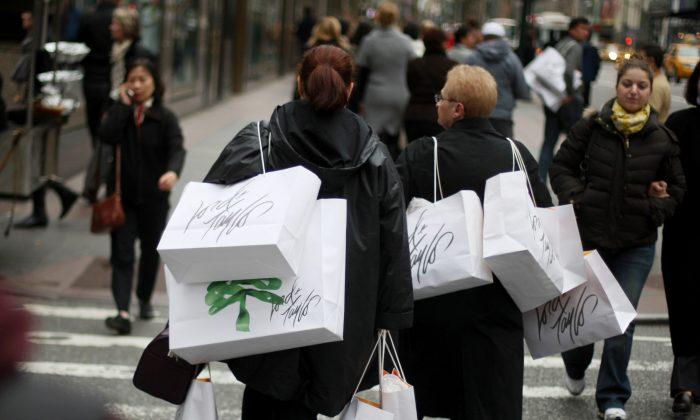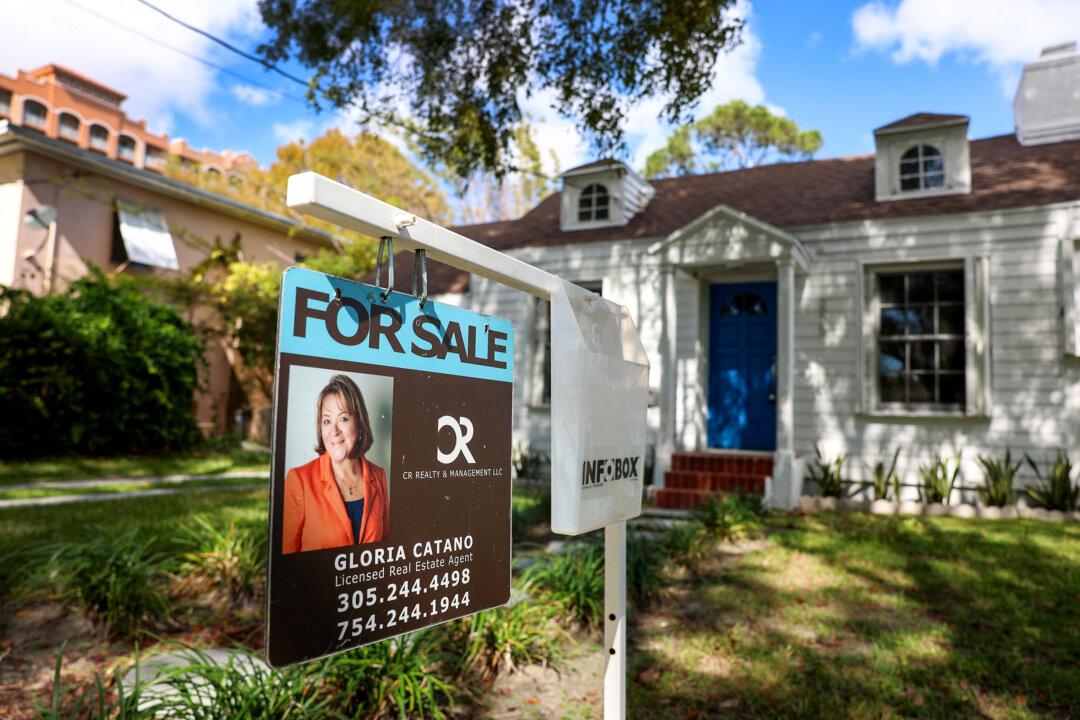The fourth quarter started off with a healthy surge of retail sales, giving the economy a much-needed boost, as Americans eagerly started their holiday shopping early on to avoid empty retail shelves amidst supply chain bottlenecks and resulting shortages.
The Commerce Department reported Tuesday that retail sales, a measure taken to calculate consumer spending at outlets, restaurants, and online stores, jumped 1.7 percent in October. Despite data indicating consumer confidence at a 10-year low, the latest retail sales numbers show significant gains, the largest since March, beating a 1.4 percent increase expected by analysts.
Retail sales mostly include goods with services like health care, hotel accommodation, and education making up the remainder of consumer spending.
“Today’s numbers show that consumers are getting a jump on their holiday shopping,” said Matthew Shay, president of the National Retail Federation in Washington, to Reuters. “We continue to urge consumers to shop early and shop safely, and we fully expect this holiday season to be one for the record books.”
Retailing leaders like Walmart and Home Depot reported robust third-quarter sales and profits. Nonstore retailers went up by four percent whereas sales at electronics and appliance stores climbed 2.8 percent. While early consumer purchases might dampen upcoming sales numbers in November and December, economists are predicting record revenues this season, mostly from pent-up demand due to the pandemic.
“October retail sales growth was led by holiday-friendly categories such as nonstore retailers (e-commerce shops such as Amazon.com) and electronics stores,” said Ted Rossman, senior industry analyst at Bankrate, to The Epoch Times in an emailed statement.
As fuel prices rose by more than 60 percent from the past year, retail sales at gasoline stations hiked by 3.9 percent. This could be from a fear of prices increasing even further. Sales numbers at restaurants and bars were unchanged, but were up 29.3 percent from October 2020.
Motor vehicles registered a growth in sales of 1.8 percent, a reflection of higher prices and an increase in unit sales for the first time in six months. Supply chain issues are driving up costs of automobiles and related parts. Sales at building material stores went up by 2.8 percent. Consumers were also seen spending for electronic goods and appliances, up 3.8 percent more.
Americans spent a combined $638.2 billion last month, a 16 percent increase from 2020. One of the reasons given for the increased spending was that families were able to save more while in quarantine, and have received a boost in income from policies such as the Child Tax Credit.
“You have to wonder where all of this money is coming from. Government stimulus payments are a distant memory at this point, and yet people continue to spend like crazy. The K-shaped recovery has to be a big part of it: If your wages are up, your home value is up and your investments are up, it makes sense that you’d be feeling better and ready to splurge a little as COVID (hopefully) continues to fade,” said Rossman.
Retail sales, when adjusted for inflation, have risen at an approximately five percent annualized rate from the third-quarter average. Consumer spending, which makes up almost two-thirds of the country’s economic activity, rose 1.7 percent last quarter.
GDP growth estimates for the fourth quarter have gone up from four to five percent, as calculated by JPMorgan economists. According to third-quarter calculations, the U.S. economy grew by two percent.
“The economy has thrown off whatever lethargy it might have had in the summer, and it is growing quite strongly,” said Joel Naroff, chief economist at Naroff Economics in Holland, Pennsylvania, to Reuters.
The monthly consumer inflation rate increased 0.9 percent in October which is reflected in the high sales numbers. Currently, the annual rate of inflation is 6.2 percent. Wall Street stocks were trading high on the latest data, and a healthy forecast by Walmart for the holidays. The dollar rose in value while U.S. treasury prices fell.
Rossman added, “But all of this spending has to translate into higher credit card debt at some point. That’s a trend that we’re seeing among some households but just beginning to see more broadly. It’s no wonder that we’re dealing with supply chain shortages and inflation because demand is incredibly high right now.”





